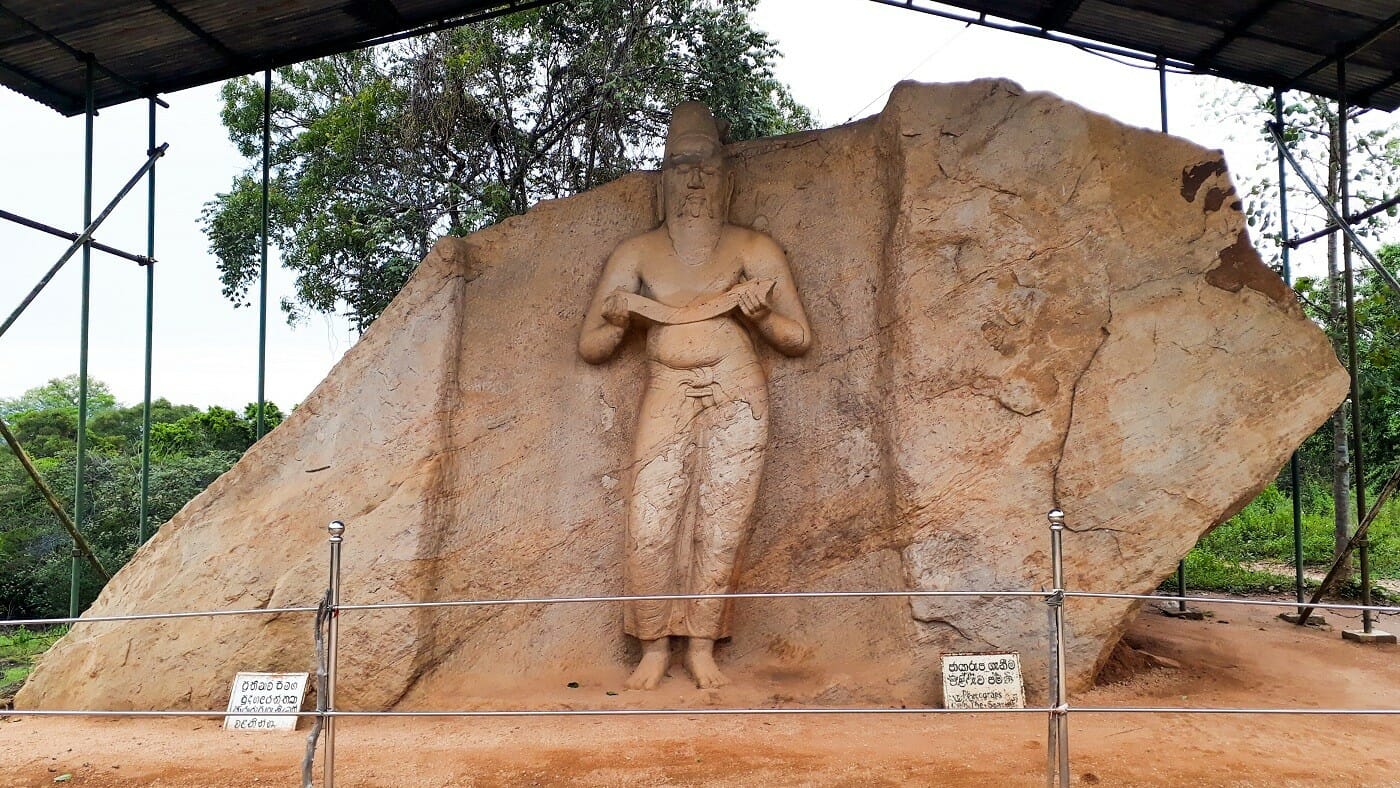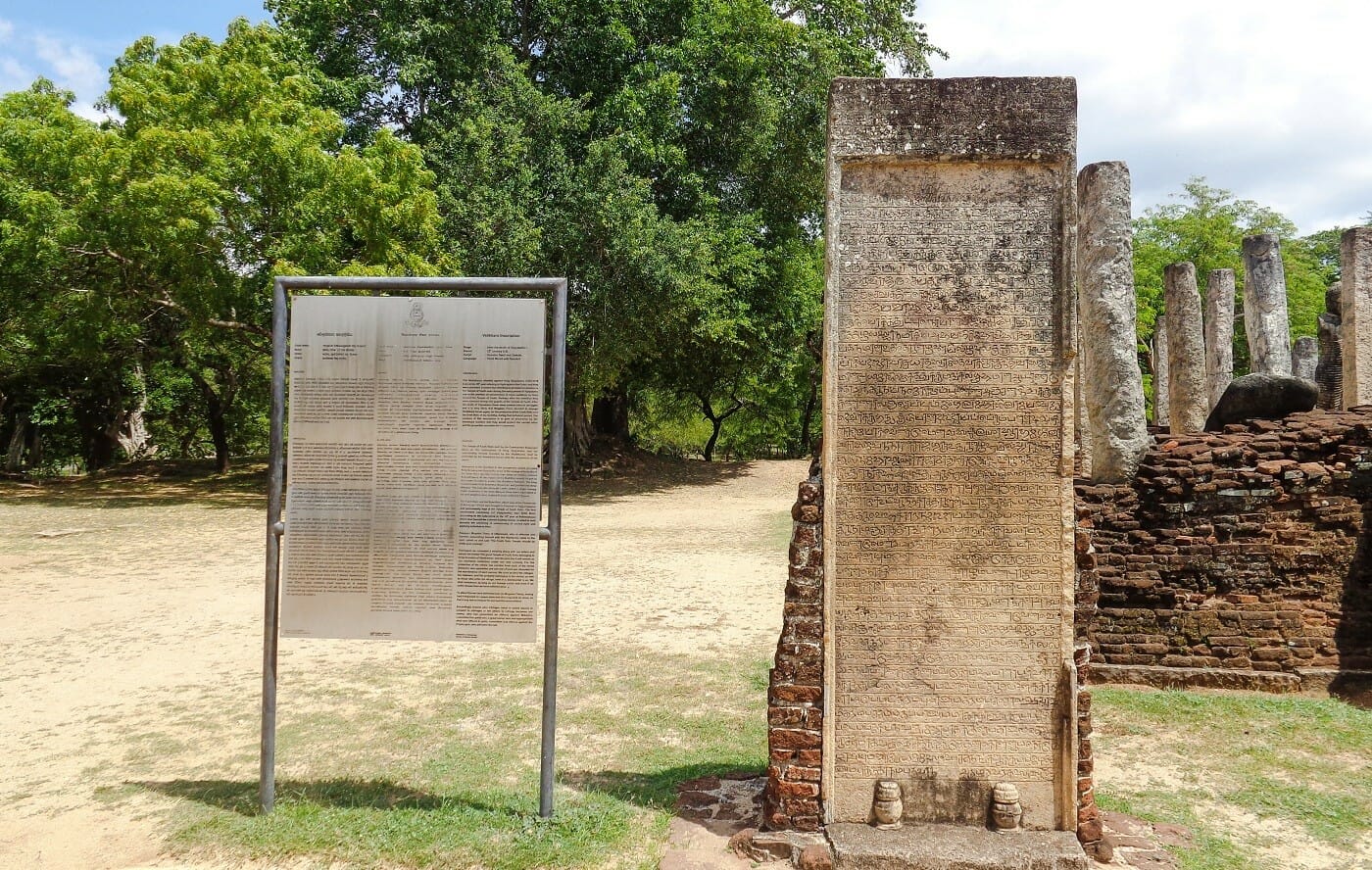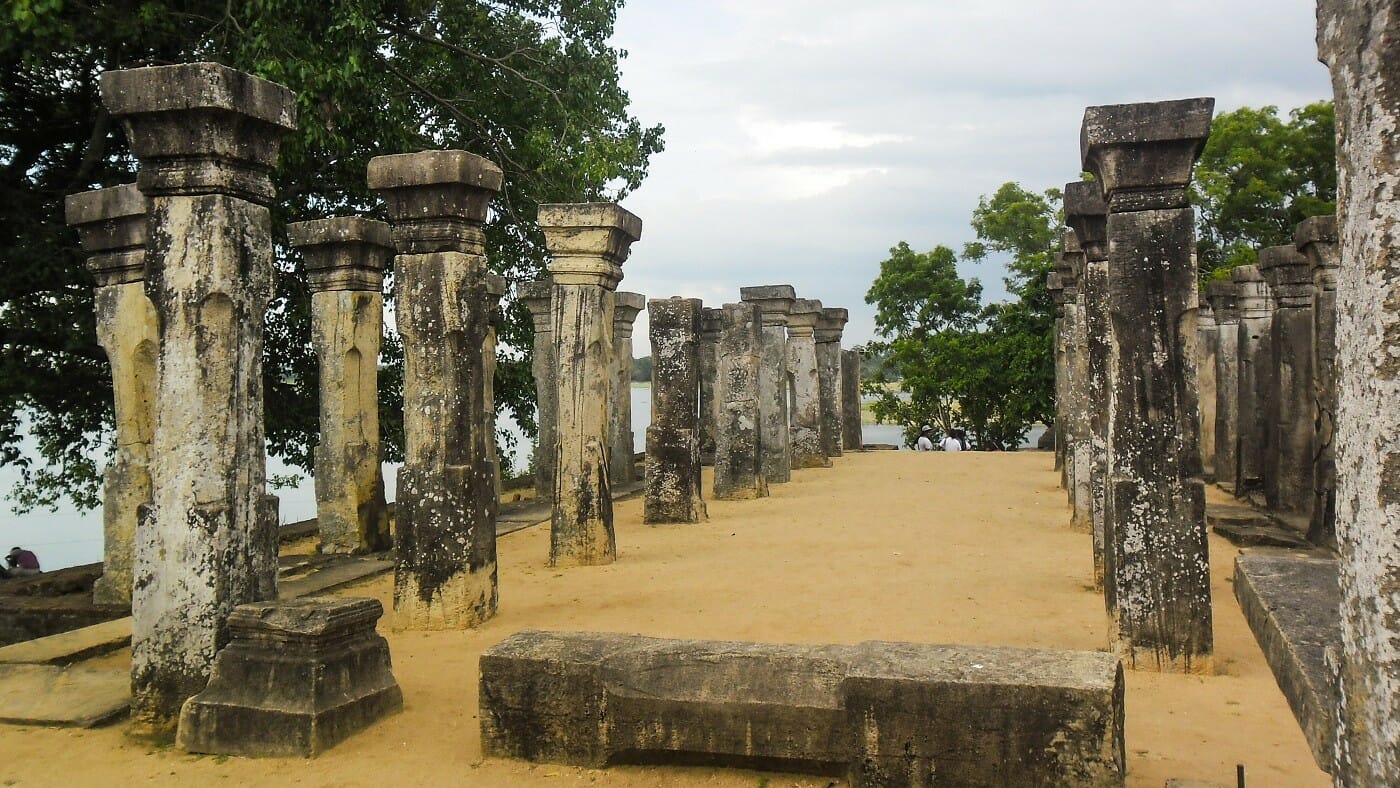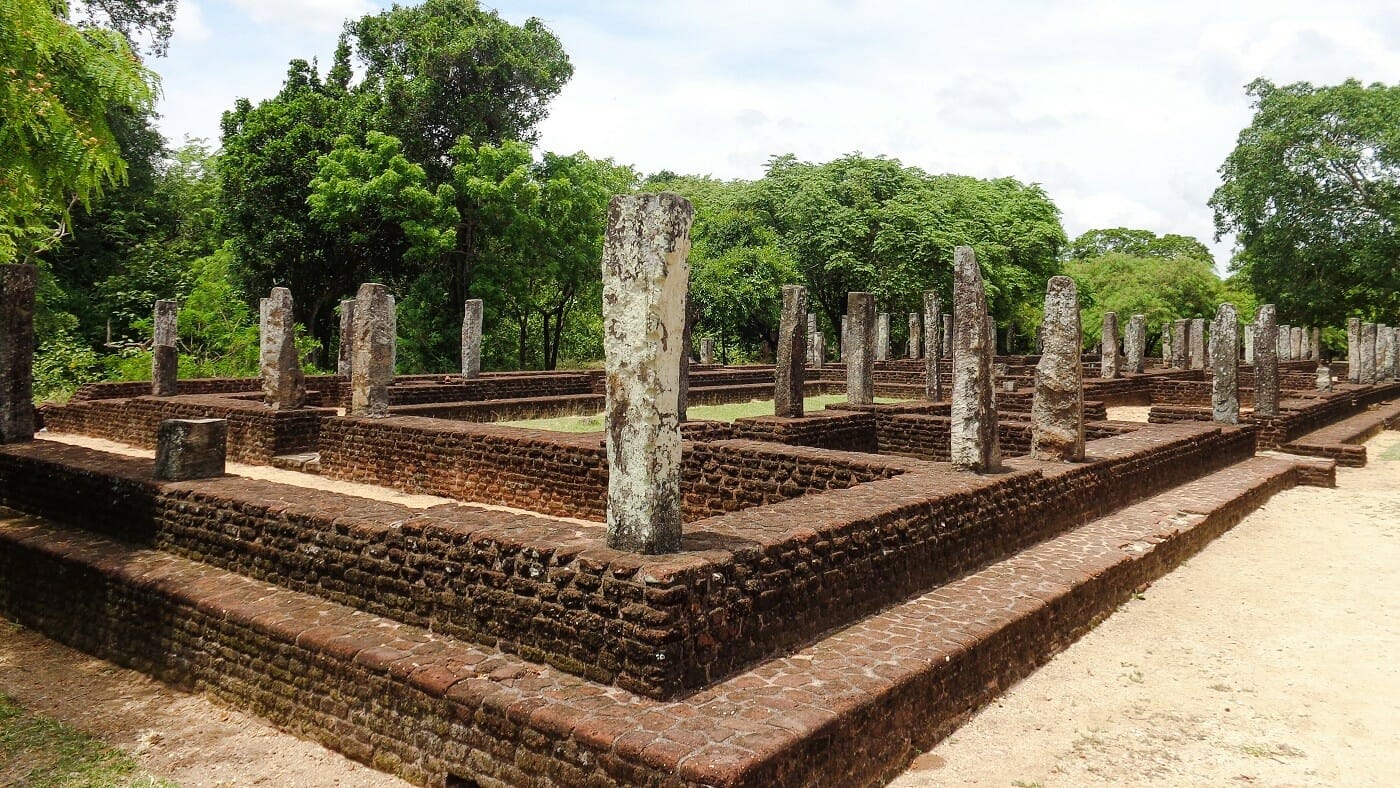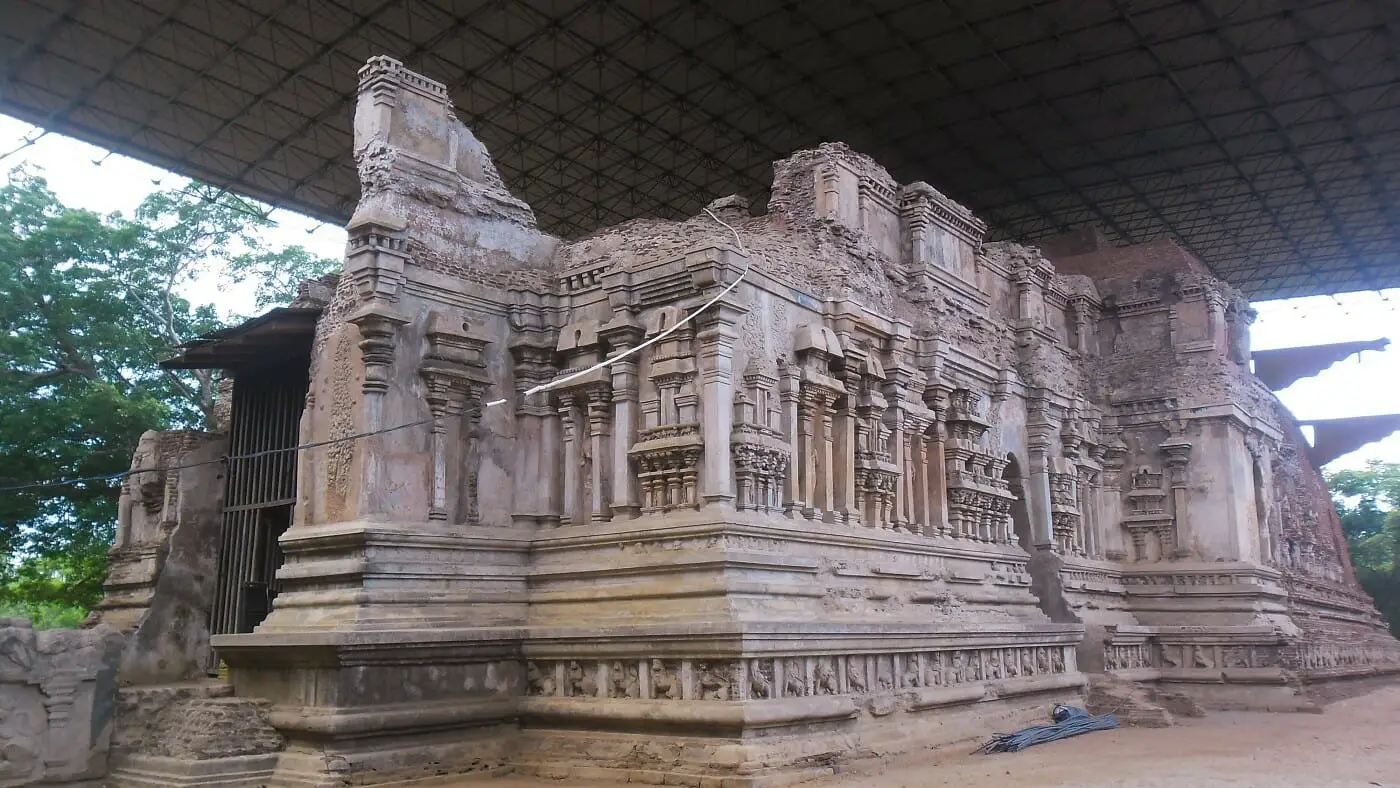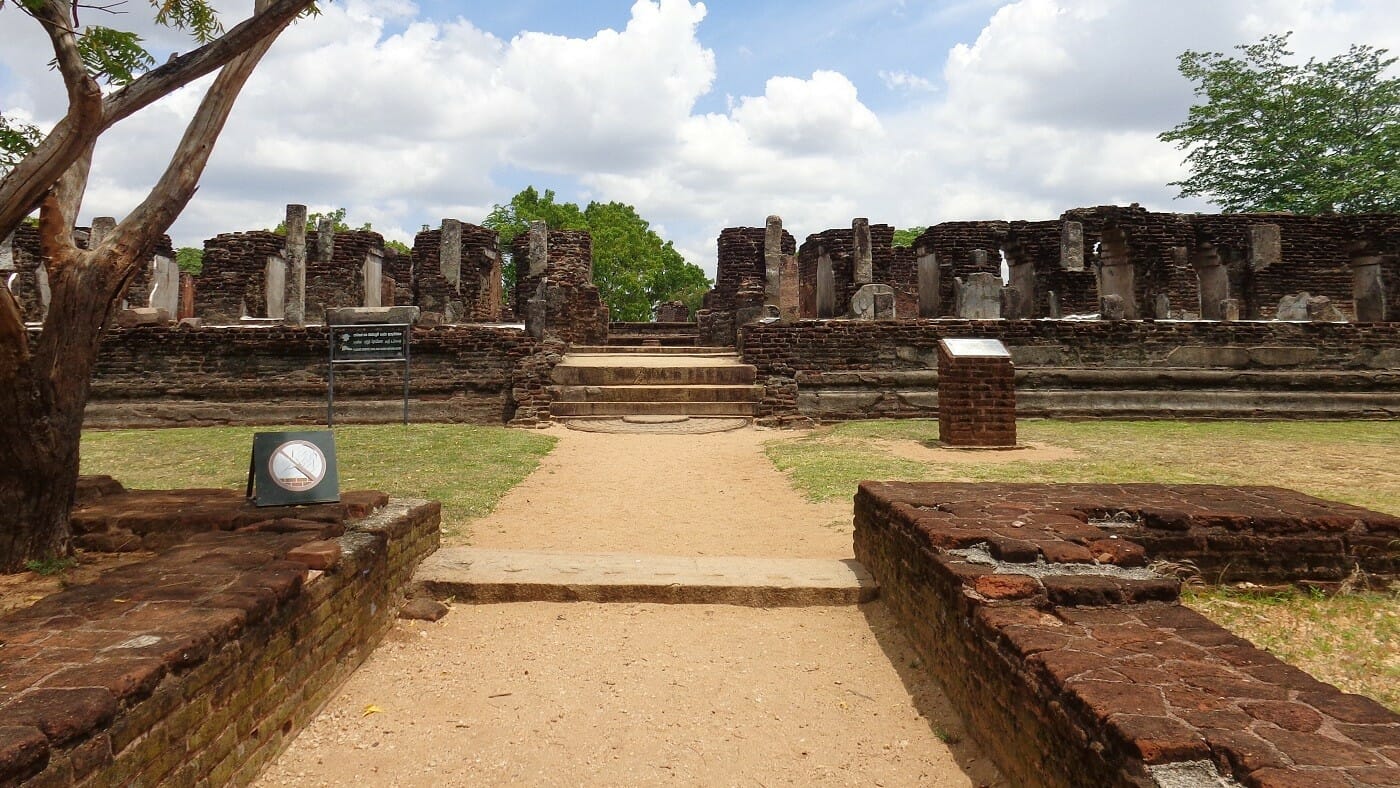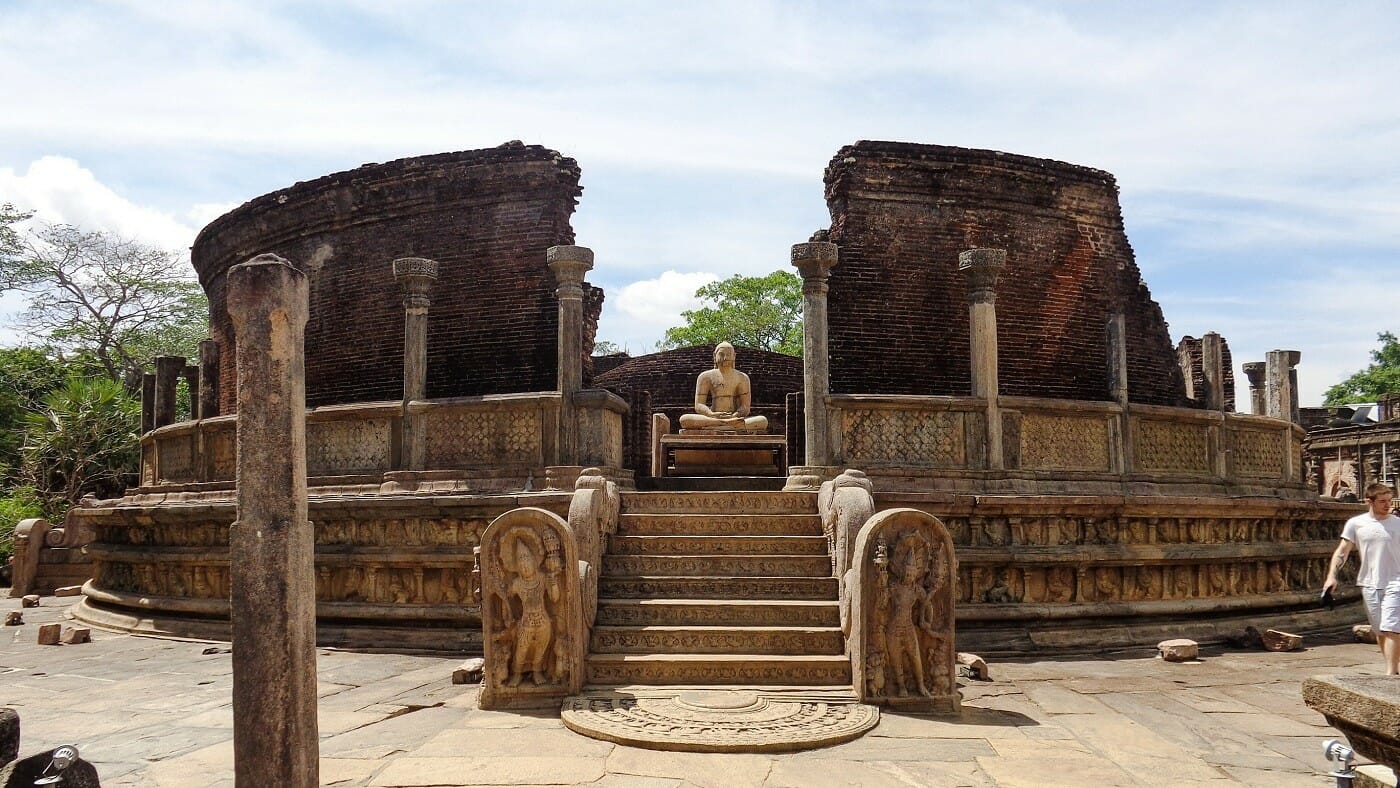Favorite
This beautifully carved ancient statue is located near the Pothgul Vehera in the Polonnaruwa District of North Central Province, Sri Lanka. The identity of this statue is not yet confirmed and some believed it to be the statue of King Parakramabahu the Great (1123–1186). And others believed that it is the statue of great Saint called Pulasthi or Kapila. The statue is about 3.5m tall and carved into a large rock boulder. Enter your current location in the search box below the map to find the best route to the statue of King Parakramabahu the Great Click here to find a list Read more...
Favorite
Velaikkara Inscription is an ancient inscription carved on a stone located in the Dalada Maluwa premises of main archaeological site in Polonnaruwa District of North Central Province, Sri Lanka. The Velaikkaras rebelled against King Vijayabahu (1055 – 1110 A.D.) in his 30th year refusing to fight against the Colas and they were punished. It seems that Velaikkaras provided protection to the Temple of Tooth even during the early period of Viajayabahu due to the mention of construction of some building by them around the Temple of Tooth. Perhaps after the rebellion, they were removed beings the guards of the Temple of Read more...
Favorite
This building has been identified as the Council Chamber of King Nissankamalla (1187 – 1196 A.D.). An inscription on the lion figure made of the stone itself identifies as the throne of the king. And the inscriptions on the pillars indicate the seating arrangement of the respective ministers and state officials. This Council Chamber is located in the Dipauyana premises in Polonnaruwa District of North Central Province, Sri Lanka. You can access it through the Archaeological Museum or by the footpath (Royal Palace Pathway) which is starting in front of the entrance to the main archaeological site. Read more...
Favorite
This monastic hospital is located in the Alahana Piriwena premises of the main archaeological site in Polonnaruwa District of North Central Province, Sri Lanka. The archaeological excavations have confirmed this building as a monastic hospital constructed in the 12th century. A medicine trough (Behet Oruva)made of stone is still can be seen in one room. This medicine trough had been used for treating patients by immersing in herbal oil. Several surgical and medical instruments also have been discovered during the excavations at this site. There are two main sections in this building namely living and treatment sections. Both sections have open courts Read more...
Favorite
Tivanka Image House is identified as the image house of Jetavanaramaya Monastery built by the King Parakramabahu the Great (1153 – 1186). It is located in the main archaeological site of Polonnaruwa District in North Central Province, Sri Lanka. The name Tivanka (means three bends) is given due to its giant Buddha image is bent at three places, namely shoulder, hip, and knee. The image house is famous due to the paintings on its interior walls. The paintings belong to the 12th century and they depict certain incidents from Jataka Stories and the life of Buddha. Like Thuparamaya and Lankathilaka, this image Read more...
Favorite
Baddhasima Prasadaya is the Pohoyageya or Uposathagharaya (Chapter House) of the monks of Alahana Piriwena where they rehearsed the codes of discipline (Especially the pati mokka). It is located in Polonnaruwa District of North Central Province, Sri Lanka. The remaining pillars and brick walls suggest that there had been a multi-storied building and according to the Mahavamsa, there had been a twelve storied building. As such, this may be the largest of the Uposathaghara in the Island. The central Platform of the building was to locate the relic casket while four monks seated on the stone pedestal facing the cardinal directions read the code of Read more...
Favorite
Polonnaruwa Vatadage belongs to the Polonnaruwa Kingdom. It is a structure which is built encircling the stupa for protection. It is believed that the structure was built during the reign of King Parakramabahu I (1123–1186) to hold the Sacred Tooth Relic of Lord Buddha. However, this has been renovated during the reign of King Nissanka Malla (1187 – 1196). One of the four Buddha statues on the upper platform This is the most famous Vatadage among the other Vatadage structures found in Sri Lanka. It has two stone platforms and only single entrance is there to access the lower platform. Read more...
